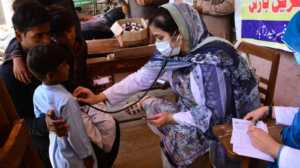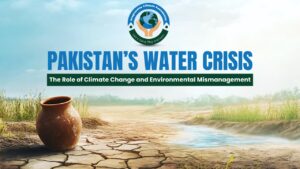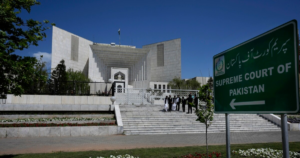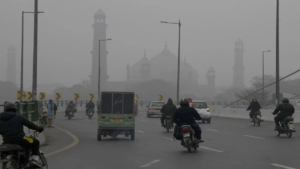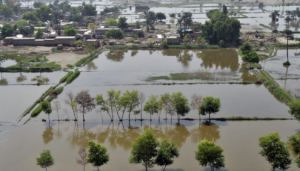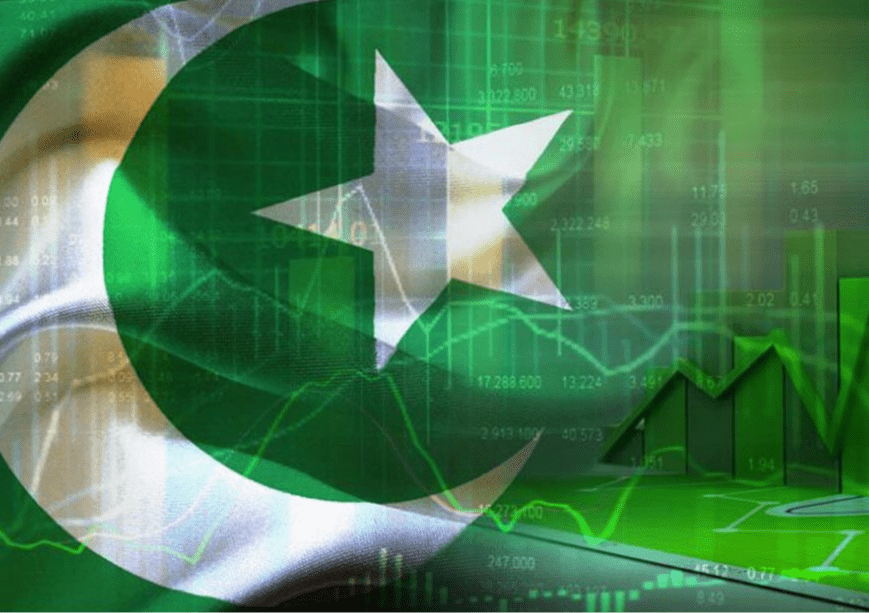
As Pakistan’s ongoing USD 3 billion International Monetary Fund (IMF) program nears completion, it is desperately seeking another bailout from the international financial institution. The nine-month, USD 3 billion Stand-By Arrangement (SBA) with the IMF was initiated last year to avoid looming loan defaults and address the country’s balance-of-payment crisis.[1] The last tranche of USD 1.1 billion has not yet been released to Pakistan. Nevertheless, the Pakistani government has already begun discussions with the IMF for a new multi-billion dollar loan agreement “to support its economic reform program.” According to Finance Minister Muhammad Aurangzeb, Pakistan will be requesting at least a ‘three-year’ program.[2] The need for a new IMF loan suggests that the reforms implemented in the last nine months failed to stabilize the country’s economy, let alone reform it.
Furthermore, the Special Investment Facilitation Council (SIFC), a pet project of Pakistan Army Chief General Syed Asim Munir, has failed to revive the economy and attract new investments to the country.[3] A multi-year loan program will only bring new and stringent conditions, including regular food and fuel price hikes, further exacerbating difficulties for the poor and middle-class people in Pakistan. 8.5 million people face acute food insecurity due to high inflation and the balance of payments crisis, making Pakistan one of the worst in terms of food security on the Global Hunger Index.[4] In 2023, over 39.4 per cent of the population fell below the poverty line in Pakistan, which means over 12.5 million people are living in meagre conditions.[5]
According to World Bank’s latest Pakistan Development Update: Fiscal Impact of Federal State-Owned Enterprises, Pakistan’s economy is expected to grow by only 1.8 percent in the current fiscal year ending June 2024.[6] Similarly, on April 11, the Asian Development Bank (ADB) said that Pakistan’s “economic outlook remains uncertain,” as political instability would remain a key risk to the sustainability of stabilisation and reform efforts. The ADB has predicted 1.9 per cent growth for Pakistan in the fiscal year 2024 (ending on June 30).[7] Additionally, the country is supposed to pay back USD 4.3 billion in external debt in the last quarter of this fiscal year after the repayment of USD 1 billion Pakistan’s International Bond on April 12.[8] After this, Pakistan’s total outstanding international bonds/Sukuks are USD 6.8 billion. These numbers present a grim picture about the future of the country’s economy.
Moreover, under any new program, the IMF’s close oversight of the Pakistani government’s financial dealings will require increased transparency and accountability in foreign-funded projects, including those under the China-Pakistan Economic Corridor (CPEC) and SIFC.[9] This heightened scrutiny will likely annoy Beijing because Pakistan will be under pressure to share hidden terms and conditions of CPEC-related investments.[10] Despite demands from the IMF and other global financial institutions like the World Bank for greater transparency on CPEC, no significant progress has been made thus far.[11] China’s reluctance to make new investments in Pakistan can be attributed in part to this increased scrutiny from international financial institutions in Islamabad.[12] China is also feeling insecure over Pakistan’s desperate attempts to improve relations with the US after the Imran Khan fiasco.[13] As a result, FM Aurangzeb is visiting the US this week to attend meetings organized by the IMF and World Bank between April 15-20.[14]
To impress global lenders for new loans, Pakistan is making desperate last minute “structural reforms” to stabilize the economy. One such reform includes the privatization of its poorly performing state-owned enterprises (SOEs) like Pakistan International Airlines (PIA), the country’s national carrier.[15] The extent to which this privatization exercise of PIA will succeed is uncertain at this point. Notably, Pakistan has a poor track record of implementing reforms and policies over the long term. Najy Benhassine, World Bank Country Director for Pakistan, recently said, “developing a clearly articulated reform implementation plan that is ambitious, credible and that shows quick progress is now essential to restore confidence [in Pakistan’s economy].”[16] Furthermore, the current coalition government in Pakistan is extremely unpopular domestically and is under scrutiny internationally after a rigged elections in February.[17] Whether the IMF will take the risk of investing in a politically unstable country is another factor to consider.
The global lender is closely monitoring certain economic indicators based on the ongoing SBA program’s outcomes. On April 11, IMF chief Kristalina Georgieva commented on the matter, saying, “there are very important issues to be solved in Pakistan: the tax base, how the richer part of society contributes to the economy, the way public spending is being directed and of course, creating…a more transparent environment.”[18] This statement clearly indicates that the IMF is not confident about the progress of structural economic reforms in Pakistan. Therefore, the approval of a new loan arrangement, which would be the 25th for the country, may not be easy at all.[19] Moreover, Aurangzeb is seen as an inexperienced finance minister who will likely work in the shadows of Foreign Minister Ishaq Dar and COAS General Munir.[20] In conclusion, Pakistan’s desperation to seek a quick loan from the IMF reflects the uncertain state of its economy.
[1] https://www.imf.org/en/News/Articles/2024/03/19/pr2491-pakistan-imf-reaches-staff-level-agreement-second-final-review-9-month-sba
[2] https://www.brecorder.com/news/40298718/pakistan-and-imf-discussing-new-multi-billion-dollar-programme-finance-minister-says
[3] https://tribune.com.pk/story/2443823/sifc-faces-hurdles-in-attracting-fdi
[4] https://www.aljazeera.com/news/2023/7/26/why-is-pakistan-ranked-99th-on-the-global-hunger-index
[5] https://tribune.com.pk/story/2437352/95m-pakistanis-live-in-poverty-world-bank
[6] https://www.worldbank.org/en/news/press-release/2024/04/01/pakistan-implementing-an-ambitious-credible-and-clearly-communicated-economic-reform-plan-critical-for-robust-recovery-p
[7] https://www.arabnews.pk/node/2491586/pakistan
[8] https://www.business-standard.com/world-news/state-bank-of-pakistan-repays-1-bn-in-eurobonds-ahead-of-imf-bailout-124041400430_1.html
[9] https://www.cadtm.org/Pakistan-s-debt-from-China-becomes-burden-as-CPEC-does-not-generate-enough
[10] https://profit.pakistantoday.com.pk/2024/04/16/pakistan-begins-negotiations-for-multi-billion-dollar-imf-loan-aurangzeb/
[11] https://www.dawn.com/news/1290523
[12] https://www.chinausfocus.com/finance-economy/why-is-china-missing-from-pakistans-foreign-investment-plans#:~:text=Pakistan%20would%20not%20have%20turned,loans%20in%20the%20near%20future.&text=Since%20April%202022%2C%20Pakistan%20has,in%20a%20lingering%20political%20crisis.
[13] https://tribune.com.pk/story/1824812/us-examine-chinese-debt-decision-imf-loan-pakistan
[14] https://www.dawn.com/news/1827792/pakistan-to-request-for-3-year-imf-programme-says-finance-minister
[15] https://www.ch-aviation.com/news/138717-islamabad-issues-eoi-invite-for-pia-privatisation
[16] https://www.worldbank.org/en/news/press-release/2024/04/01/pakistan-implementing-an-ambitious-credible-and-clearly-communicated-economic-reform-plan-critical-for-robust-recovery-p
[17] https://www.lemonde.fr/en/opinion/article/2024/03/01/pakistan-s-worst-case-scenario-arrives-rigged-elections-and-an-economic-crisis_6577128_23.html
[18] https://www.reuters.com/world/asia-pacific/imf-chief-says-pakistan-seeking-potential-follow-up-loan-program-2024-04-11/#:~:text=Georgieva%20told%20an%20event%20at,reserves%20now%20being%20built%20up.
[19] https://www.imf.org/en/Countries/PAK#countrydata
[20] https://www.brecorder.com/news/40297103

